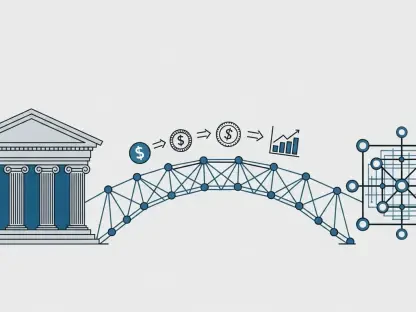The financial sector, encompassing banks, investment firms, and insurance companies, is a prime target for cybercriminals due to the vast amounts of sensitive data and transactions it handles. As cyber threats become more sophisticated, financial institutions must adopt robust cybersecurity measures to protect their assets and maintain customer trust. This article explores the most pressing cybersecurity threats facing the financial industry today and outlines effective strategies to counter them.
Ransomware Attacks
The Surge in Ransomware Incidents
Ransomware attacks have dramatically increased, with 65% of financial institutions reporting incidents in 2024, up from 34% in 2021. These attacks often result in significant financial losses, with average ransom demands reaching $4.2 million and actual payouts averaging $7.4 million. Despite paying ransoms, there is no guarantee that attackers will cease their activities or not sell the compromised data.
Ransomware is a type of malware that encrypts a victim’s files, demanding a ransom payment to restore access. Financial institutions are particularly lucrative targets for ransomware attackers because of their high-value data and capacity to pay substantial ransoms. The rise in ransomware incidents underscores the need for robust cybersecurity protocols and education to prevent these attacks from succeeding. It is critical for financial institutions to stay informed about the latest ransomware tactics and continually update their security measures to protect against these evolving threats.
Mitigation Strategies
To combat ransomware, financial institutions must implement comprehensive security measures, including regular data backups, employee training on recognizing phishing attempts, and deploying advanced threat detection systems. Additionally, having a well-defined incident response plan can help minimize the impact of an attack. Regular backups ensure that critical data can be restored without paying a ransom, while advanced threat detection systems can identify and neutralize ransomware before it executes.
Employee training is equally important, as human error often plays a significant role in successful ransomware attacks. By educating staff on the dangers of phishing and how to identify suspicious emails, financial institutions can reduce the likelihood of an employee inadvertently triggering a ransomware infection. A well-practiced incident response plan ensures that the organization can swiftly and effectively respond to an attack, reducing downtime and mitigating financial and reputational damage.
Phishing and Social Engineering
Prevalence of Phishing Attacks
Phishing remains a predominant threat, with 68% of identified phishing pages targeting financial institutions. Cybercriminals use these tactics to acquire sensitive data, such as banking credentials, which can be sold on underground markets or used for further attacks. Phishing attacks typically involve fraudulent emails or websites that appear legitimate, tricking recipients into disclosing personal information.
These attacks have become increasingly sophisticated, often leveraging social engineering techniques to deceive targets. Financial institutions, given their access to valuable personal and financial information, are frequent targets for these attacks. As cybercriminals continually refine their tactics, the financial sector must remain vigilant and proactive in its phishing defense strategies. This includes analyzing current phishing trends and understanding how attackers exploit human behavior to perpetrate their schemes.
Enhancing Phishing Defenses
Financial institutions can enhance their defenses against phishing by adopting advanced identity verification methods, such as multi-factor authentication (MFA), and implementing email authentication protocols like DMARC. Regular employee training on recognizing and reporting phishing attempts is also crucial. MFA adds an additional layer of security beyond just a password, making it more difficult for attackers to gain unauthorized access to accounts.
Email authentication protocols such as DMARC (Domain-based Message Authentication, Reporting, and Conformance) help protect against email spoofing and phishing by verifying the authenticity of the sender’s domain. These measures can significantly reduce the success rate of phishing attacks. Additionally, ongoing employee education ensures that staff remain aware of the latest phishing tactics and understand the importance of promptly reporting suspicious activities.
Distributed Denial of Service (DDoS) Attacks
Impact on Financial Institutions
DDoS attacks threaten the high availability of financial services, with significant incidents peaking at 798Gbps. These attacks can be politically motivated or driven by geopolitical tensions, causing substantial disruptions to financial operations. In a DDoS attack, multiple compromised devices are used to flood a target’s network with excessive traffic, overwhelming its servers and rendering services inaccessible.
For financial institutions, where uptime is critical, DDoS attacks can lead to severe operational disruptions, eroding customer trust and potentially resulting in financial losses. The reliance on real-time transactions and online banking services amplifies the impact of these attacks, making robust defenses essential. It is crucial for financial institutions to understand the specific threats posed by DDoS attacks and how to effectively mitigate them to ensure seamless and reliable service delivery.
DDoS Mitigation Techniques
To mitigate DDoS attacks, financial institutions should invest in high availability and redundancy planning, along with advanced DDoS protection solutions. Regularly updating and testing these defenses can help ensure they remain effective against evolving threats. High availability and redundancy planning involves creating backup systems and networks that can take over seamlessly if the primary ones are compromised, ensuring continuous service delivery.
Advanced DDoS protection solutions can detect and filter out malicious traffic, preventing it from overwhelming the network. These solutions often use machine learning algorithms to differentiate between legitimate and illegitimate traffic. Regular testing and updating of DDoS defenses are essential to adapting to new attack methods and ensuring preparedness. By proactively implementing these measures, financial institutions can maintain service availability and protect against the damaging effects of DDoS attacks.
Advanced Persistent Threats (APTs)
State-Sponsored Cyber Attacks
APTs are a serious concern for the financial sector, often carried out by state-sponsored groups from countries like North Korea and Iran. These attackers aim to steal funds, manipulate financial systems, or gather intelligence. APTs involve prolonged, targeted attacks that infiltrate a network and remain undetected for extended periods, allowing attackers to achieve their objectives stealthily.
The sophisticated nature of APTs makes them particularly challenging to detect and defend against. Financial institutions, given their role in national and international economic stability, are prime targets for state-sponsored attacks. These adversaries possess significant resources and capabilities, necessitating equally robust and advanced security measures. Understanding the specific tactics used by APT groups and enhancing the institution’s defensive posture is critical to mitigating these threats effectively.
Strengthening Defenses Against APTs
Financial institutions can strengthen their defenses against APTs by enhancing monitoring capabilities, employing multiple security layers, and collaborating internationally to share threat intelligence. Regular security audits and penetration testing can also help identify and address vulnerabilities. Enhanced monitoring involves using advanced tools and technologies to continuously scan for unusual activities and potential breaches, enabling timely detection and response.
Employing multiple security layers, also known as defense-in-depth, ensures that even if one security measure is bypassed, others remain in place to protect critical assets. Collaborating with other financial institutions and cybersecurity organizations to share threat intelligence fosters a collective defense approach, improving the sector’s overall security posture. Conducting regular security audits and penetration tests helps identify potential weaknesses and allows for their remediation before they can be exploited by attackers.
Insider Threats
Risks Posed by Insiders
Employees with privileged access to sensitive systems and data represent a significant risk through intentional or unintentional breaches. Insider threats can be challenging to detect and mitigate without proper access management. These threats can arise from malicious insiders seeking personal gain or unintentional actions by employees unaware of the security implications of their behavior.
The financial sector, due to its handling of critical and sensitive information, is particularly vulnerable to insider threats. Effective mitigation requires a combination of technical controls, such as monitoring and access restrictions, and fostering a culture of security awareness. Understanding the diverse motivations behind insider threats and implementing comprehensive strategies to counteract them is essential for maintaining the integrity and security of financial institutions.
Mitigating Insider Threats
To mitigate insider threats, financial institutions should implement strict access controls, continuous monitoring, and regular employee training on security best practices. Encouraging a culture of security awareness can also help reduce the likelihood of insider incidents. Strict access controls limit employees’ access to only the information and systems necessary for their roles, reducing the risk of unauthorized access.
Continuous monitoring involves scrutinizing user activities in real-time to detect and respond to suspicious behaviors promptly. Regular employee training ensures that staff understand the importance of security protocols and their role in protecting sensitive data. Cultivating a security-aware culture encourages employees to remain vigilant and report potential security concerns, thereby reducing the chances of successful insider attacks. Robust provisions for identity verification and access management need to be seamlessly integrated to mitigate these insidious risks effectively.
Security Debt
Understanding Security Debt
Security debt refers to unresolved vulnerabilities within a system. A notable percentage of financial sector organizations carry significant security debt, particularly within first-party and third-party code. As institutions prioritize new features or services, addressing security vulnerabilities can sometimes be deferred, leading to accumulated risks over time.
This accumulated security debt can leave financial institutions susceptible to cyber attacks, as unresolved vulnerabilities present easy targets for cybercriminals. Understanding the extent and nature of security debt within an institution’s systems is crucial for prioritizing remediation efforts and securing the organization against potential breaches. Proactive management of security debt is essential to prevent these vulnerabilities from being exploited.
Addressing Security Debt
Financial institutions must prioritize the remediation of vulnerabilities to reduce security debt. This involves regular security assessments, patch management, and collaboration with third-party vendors to ensure their code is secure. Regular security assessments help identify existing vulnerabilities and provide a roadmap for addressing them.
Patch management ensures that systems and applications are updated promptly with the latest security fixes, reducing the risk of exploitation. Collaboration with third-party vendors is critical, as their code can introduce vulnerabilities into the institution’s systems. By performing thorough security evaluations of vendor products and services, financial institutions can mitigate these risks effectively. Continuous tracking and systematic reduction of security debt must become an integral part of an institution’s cybersecurity strategy to ensure comprehensive protection.
Software Supply Chain Risks
Rise in Supply Chain Attacks
There has been a sharp rise in supply chain attacks, compelling financial institutions to adopt stringent vendor risk management practices. These attacks can compromise the integrity of software and services used by financial institutions. Supply chain attacks often target third-party vendors and suppliers, exploiting their systems to gain access to the primary target’s network.
For financial institutions, relying on a wide range of software and service providers, these attacks pose significant risks. Ensuring the security of the entire supply chain, including vendors and their products, is crucial to safeguarding the institution’s operations and data. The increasing prevalence of these attacks demands a proactive and rigorous approach to vendor risk management and supply chain security.
Securing the Software Supply Chain
To secure the software supply chain, financial institutions should implement rigorous assessments and leverage Software Bill of Materials (SBOM) tools. Regularly auditing third-party vendors and ensuring they adhere to security standards is also essential. Rigorous assessments involve evaluating vendors’ security practices and requiring compliance with industry standards.
SBOM tools provide detailed listings of all components within a software product, allowing institutions to identify and mitigate vulnerabilities in their supply chain. Regular audits of third-party vendors ensure ongoing compliance with security requirements and identify potential risks before they can be exploited. Maintaining a secure software supply chain is fundamental to protecting financial institutions against supply chain attacks and other related threats.
Cryptojacking
Threat of Cryptojacking
Cryptojacking, where malware is used to hijack organizational resources for cryptocurrency mining, poses a notable threat. The financial sector’s substantial computational resources make it a lucrative target for cybercriminals. Cryptojacking malware can infect systems and use their processing power for mining cryptocurrency, often going undetected for extended periods.
This illicit use of resources not only affects system performance but also leads to increased operating costs and potential exposure to other malware. The financial sector’s reliance on robust computational infrastructure makes it particularly vulnerable to cryptojacking attacks. Understanding the mechanisms of cryptojacking and implementing effective detection and prevention measures is vital to mitigate this growing threat.
Preventing Cryptojacking
Deploying comprehensive security measures, such as endpoint protection and network monitoring, can help detect and prevent cryptojacking activities. Regularly updating software and systems to patch vulnerabilities is also crucial. Endpoint protection involves installing security software on individual devices to detect and block cryptojacking malware.
Network monitoring tools analyze traffic patterns to identify unusual activities indicative of cryptojacking. Regular software updates ensure that vulnerabilities are patched promptly, reducing the chances of malware infections. By implementing these measures, financial institutions can effectively safeguard their computational resources and maintain optimal system performance while preventing the exploitation of their infrastructure for illicit purposes.
Emerging Quantum Threats to Encryption
Future Risks of Quantum Computing
Quantum computing poses future risks to existing encryption technologies. As quantum computers become more advanced, they could potentially break current cryptographic methods, compromising sensitive financial data. Quantum computing leverages the principles of quantum mechanics to perform complex calculations at unprecedented speeds, posing a significant challenge to traditional encryption techniques.
The financial sector relies heavily on encryption to secure transactions and protect sensitive information. As quantum technology continues to evolve, the potential for current encryption methods to become obsolete grows, necessitating the development of quantum-resistant cryptographic solutions. Understanding the implications of quantum computing on encryption and preparing for these future risks is crucial for maintaining data security in the financial industry.
Transitioning to Quantum-Proof Cryptography
The financial industry, which includes banks, investment firms, and insurance companies, is a major target for cybercriminals. This is because it deals with extensive amounts of sensitive data and numerous transactions. As cyber threats evolve and become more sophisticated, financial institutions must implement strong cybersecurity measures to safeguard their assets and maintain customer confidence. Cyberattacks can have devastating consequences, such as financial losses, legal repercussions, and a damaged reputation, which can erode customer trust.
One of the most pressing concerns is the threat of data breaches, where cybercriminals gain access to confidential information. Additionally, ransomware attacks, where attackers encrypt data and demand payment for its release, pose a significant risk. Phishing attacks, which trick individuals into revealing sensitive information, are also prevalent. Financial institutions must be vigilant and proactively address these threats.
Effective strategies to counter these cybersecurity threats include investing in cutting-edge security technologies, conducting regular security audits, and providing comprehensive training for employees. Establishing strong authentication methods and encryption protocols can further enhance security. By prioritizing cybersecurity, financial institutions can better protect their assets and maintain the trust of their customers in this increasingly digital world.









